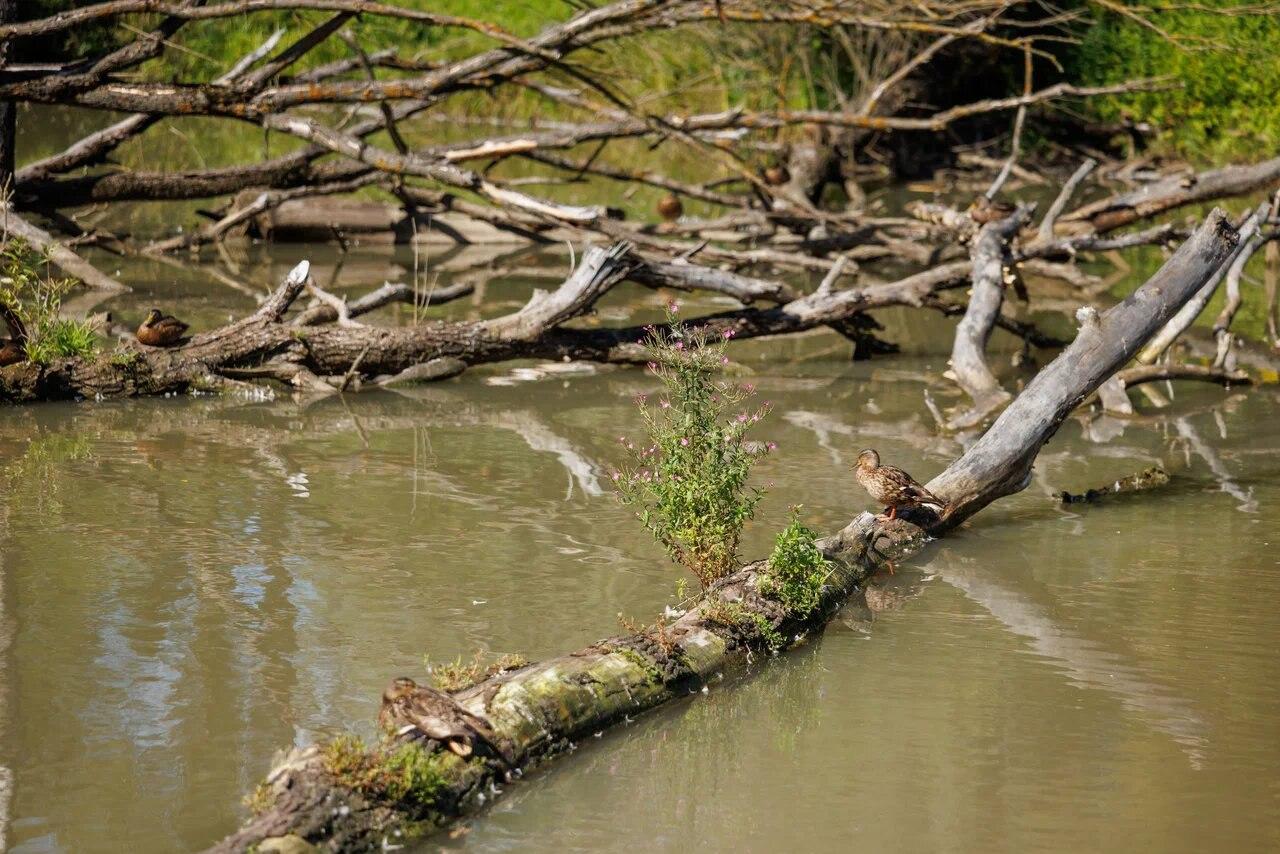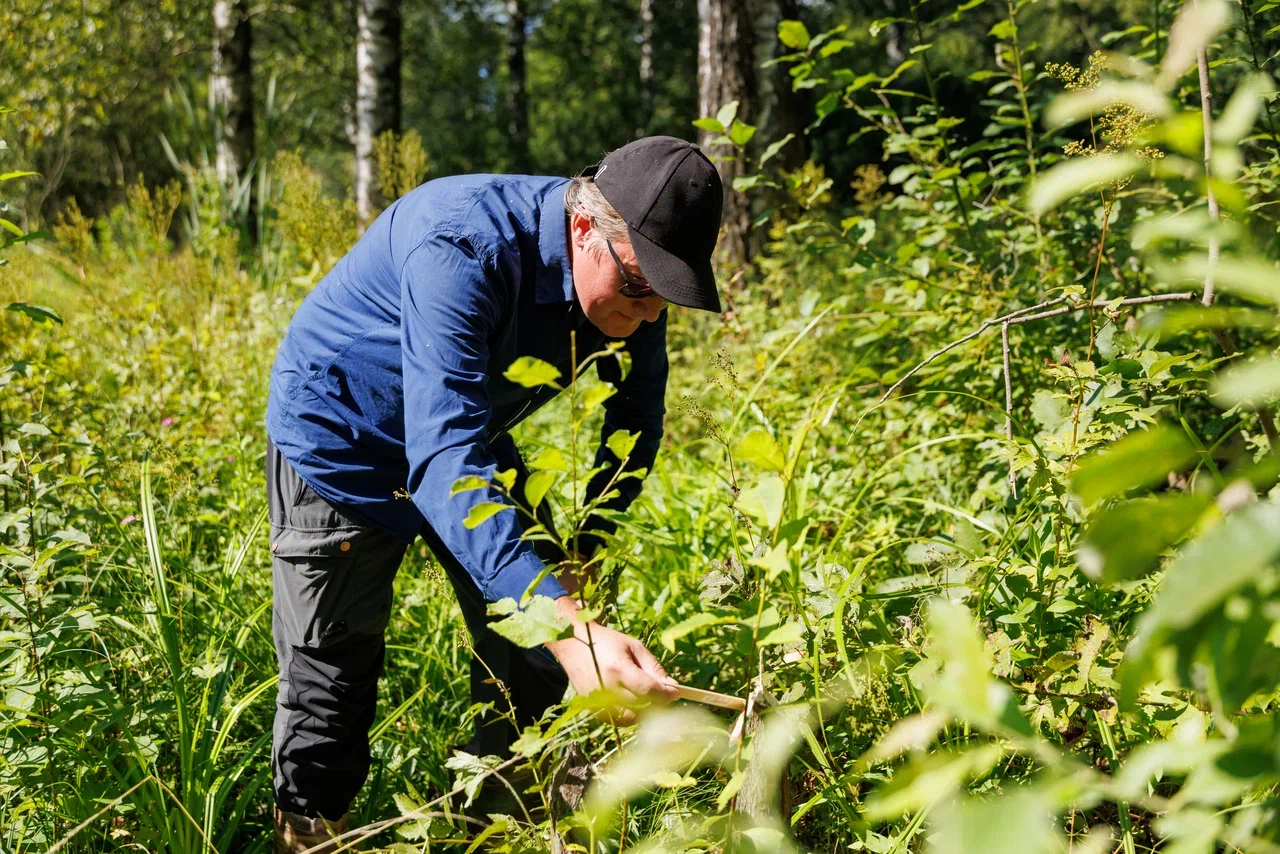
Photo source: Press services of the Department of Environmental Management and Protection
The Moscow Department of Environmental Management and Protection continues its collaboration with scientists to study the capital's flora and fauna. Researchers from the A.N. Severtsov Institute of Ecology and Evolution of the Russian Academy of Sciences (IEE RAS) examined a long-standing beaver colony on the Aleshinka River in Novo-Peredelkino.
The presence of beaver dams, fresh wood gnaws, and characteristic tracks confirmed that beavers continue to inhabit this area and produce offspring. Studying the coastal vegetation will allow us to assess the prey base of these animals and predict their future plans: whether to remain in their current habitat or seek new, more plentiful locations.

The data obtained will be supplemented in the future with information on beaver colonies in other areas of Moscow. This will provide insight into whether the animals have the space and opportunity to expand their habitats, potentially leading to the emergence of new beaver colonies. Scientists will be able to recommend when food resources should be increased, when young shrubs should be planted along riverbanks to encourage beavers to remain in one location, and where valuable mature trees should be protected from beavers if they decide to settle in a new area.
During their survey, the scientists shared several little-known facts about beavers, which allow for a better understanding of their biology and role in the ecosystem and answer a number of questions.

Why do beavers build dams?
Beavers are known for their construction skills—they can construct dams from tree branches and soil, creating ponds. But why do they do this? It turns out that beavers need to maintain a certain water level so that the entrances to their burrows and lodges remain underwater, hidden from predators. They also need to preserve a supply of twig food for the winter. This food is hidden on the bottom, in unfrozen water, which also requires a constant water level in that area.
How are the beavers useful, and to whom?
Beavers transform the landscape of their habitats and enrich the ecosystem. They have long since taken a liking to Aleshinka, constructing dams and creating a unique natural atmosphere. The riverbed is dammed in several places, tree branches peeking out from the water, creating a landscape unlike the city's usual green spaces.
"The work of these 'water engineers' lends the area a unique beauty. Clearings, known as beaver windows, form in the thicket of trees, allowing more sunlight to enter, allowing grasses to grow and become more diverse. A beaver landscape is not only made up of fallen trees but also new shallows, pools, and thickets. People are primarily concerned with the trees, but in the wild, fallen trees provide both food and shelter for many living organisms. Elk also flock to fallen aspen trees in areas where they live. Like beavers, elk love aspen and happily gnaw the bark from the trunks. Birds flock to the emerging insects. Amphibians and rodents can overwinter under the trees. Favorable conditions are created for the local ecosystem to enhance its diversity," says Ivan Bashinsky, a senior researcher at IEE RAS. Knowing about beavers' ability to transform the natural environment around them, making it more vibrant and diverse, international practice involves deliberately introducing these animals to "revitalize" a natural area and restore the wetland ecosystem.

Were there always beavers in Moscow?
“There have been no beavers in the Moscow region for over 300 years. The last beavers disappeared in the 17th century, as they were a key hunting resource”, recalled Ivan Bashinsky. The wealth of landowners' estates was measured by beaver numbers, but they gradually disappeared due to intensive hunting. Their population began to be revived in the early 20th century, when nature reserves were established to restore the game animals. Nine beavers were brought to the Moscow region from one of these reserves, the Voronezh Nature Reserve, in the 1940s, followed by several more releases. By the early 21st century, they had multiplied and spread throughout the region, reaching the capital and establishing themselves within the city limits. Today, Moscow beavers inhabit, among other places, the Setun River, the Yauza River, Losiny Ostrov National Park, the Skhodnya River valley, the Chermyanka River, Strogino, Serebryany Bor, Brateevo, Ostankino, and the Zelenogradsky Integrated Nature Reserve—and that's not even the most detailed list of habitats.
How do you count beavers?
Usually, only one family lives in a single location, so researchers can determine with relative accuracy how many individuals live in a single beaver colony. There are beaver kits in the Novo-Peredelkino colony—scientists recorded their tracks during a survey of the riverbank. This means there's an adult female and male, and they usually have two grown-up kits from the previous year and two more born this year. Therefore, at least six beavers are registered on the river near the famous writers' dachas. Once they grow up, the young beavers will go in search of new places, and the next generation will be born to replace them, so six beavers is the classic family composition of a "river engineer."
How can we learn their plans and what for?
Beavers feel quite comfortable in Moscow's green spaces. The main task of mature individuals is to find a new place for themselves, separating from their parents. They set out in search of wild shorelines where they can build dens and settle down. And here, in addition to the availability of a clear shoreline, the main question arises: is there enough food nearby? If all factors are in place—a suitable shoreline and plenty of food—the beaver will establish a new settlement. Sufficient food is equally important for the parental home, where the family continues to live and where the young beavers will be born in the spring.
“Evaluating the food supply is the work of specialists—geobotanists and hydrobotanists”, explains Elena Katsman, a senior researcher at the Laboratory of Ecology of Aquatic Communities and Invasions at IEE RAS. Her task is to explore the beaver habitat in Novo-Peredelkino, record the aquatic plants present, and estimate the amount of wood available for beaver food.
During a survey of the banks, scientists discovered that reeds, cattails, and meadowsweet grow in the Alyoshinka floodplain. Beavers consume these in large quantities, especially in the spring and summer, when they are "feasting on the greens" after a long winter. They also stockpile willow and aspen for the winter. Elena Katsman explained that these woody plants quickly regrow from the roots. Anything a beaver gnaws will regenerate within a few years. This is important for beaver families, which can migrate through several locations over the course of several years and then return to their original home.
Such research is important for the city to understand the overall development of the beaver population. Based on the scientific data, it is possible to predict their geographic distribution. In some cases, it will be necessary to support the beavers to remain within their home range by planting young trees, while in other cases, it may be necessary to protect mature trees from becoming their food sources. The main thing is for the ecosystem in the city to be stable and favorable for the development of species and for human habitation.
Photo source: Press services of the Department of Environmental Management and Protection
Related materials:
